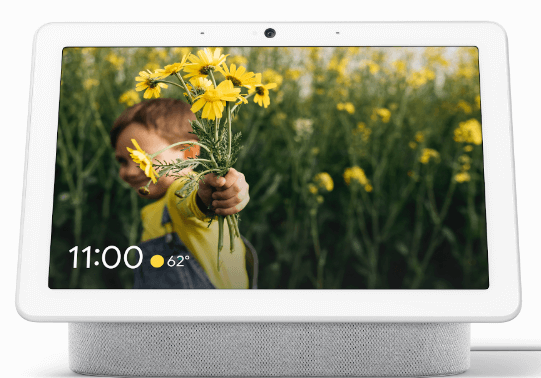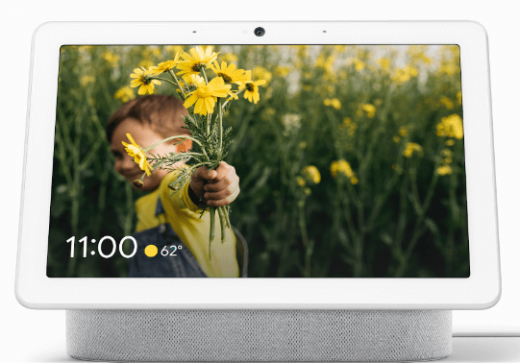Google Nest Hub Max: A new weapon in the smart home battle against Alexa
The $229 device could become a big hit, paving the way for more user engagement and monetization.
As expected, Google introduced a new 10-inch screen smart display at Google I/O. Google smart displays and speakers have now been rebranded under the Nest moniker. The rationale involves bringing the Google Home and Nest smart-home products together in the same group under the same brand, which makes complete sense.
Cool hardware, clumsy branding. All Google Home products will now all carry the Nest label. But this particular product is awkwardly branded as Nest Hub Max. Putting that aside, it’s a new flagship smart display that could help it make further gains on chief rival Amazon. There’s evidence that Google Home Hub has outsold the Echo Show, though Amazon dominates the smart speaker market.
By comparison, Apple and Microsoft are bit players in the smart speaker market. Facebook’s Portal smart displays are nicely designed but not on the sales radar. And Nest Hub Max could keep Portal at the margins. Indeed, Nest Hub Max takes its cue from Portal in some ways.
Like Portal+ it offers a large, HD screen and a smart camera, and it promotes video calling. It also bends over backwards, as Portal does, to assure users that it’s not an instrument of government or corporate surveillance. There’s a hard button that turns off the camera. Google also stressed how its data “never leaves the device.”

Google announced Nest Hub Max at its I/O developer conference Tuesday.
Feature rich. Google sees the larger-screen Hub in the kitchen or other “shared places in the home where your family and friends gather.” It can be personalized to multiple users with Voice Match and facial recognition (“Face Match”).
In the I/O keynote, Google described a wide range of use cases for the device:
- Kitchen TV (with YouTube TV and video)
- Music (smart speaker with improved bass)
- Nest Security camera (suggesting that you’ll want to buy several for different rooms)
- Smart home controller and dashboard
- Video calling (the primary use case for Portal)
- Digital photo frame
While there was no discussion of search or shopping, those use cases aren’t far behind.
Face Match enables the smart display to present personalized information (calendar, commute, weather) once it catches a glimpse of a member of the household. Facebook has a similar technology built into Portal. Smartly, Google has also added what it calls Quick Gestures to pause media or control volume with a wave of the hand rather than shouting at the machine.
Another compelling feature of Nest Hub Max is the price. It retails for $229 in the U.S. (with likely discounts come Black Friday). Google has also lowered prices on other devices: the smaller-screen Nest Hub is $129 and the original Google Home comes in at $99.
Amazon’s Echo Show retails for $229 but is routinely discounted below $200. We’re likely to see even more aggressive discounting because Amazon has no current answer to Nest Hub Max’s feature set.
Why we should care. The estimates are all over the place, but there’s reason to believe that there are about 100 million smart speakers (mostly Echo Dots and Home Minis) in U.S. homes. Depending on how well received it is, Nest Hub Max could shift the market toward smart displays. Amazon will be compelled to respond to this product — and if it’s smart so will Apple. As I indicated, Amazon will likely drop the price of Echo Show to respond in the short term.
More smart displays in the market opens the door to more business models and monetization than voice-only smart speakers. Paid search, display and video ads become viable. In addition, shopping and commerce are much more likely on a smart display than on a smart speaker. A smart display is more like a tablet than a smart speaker.
Marketing Land – Internet Marketing News, Strategies & Tips
(23)



